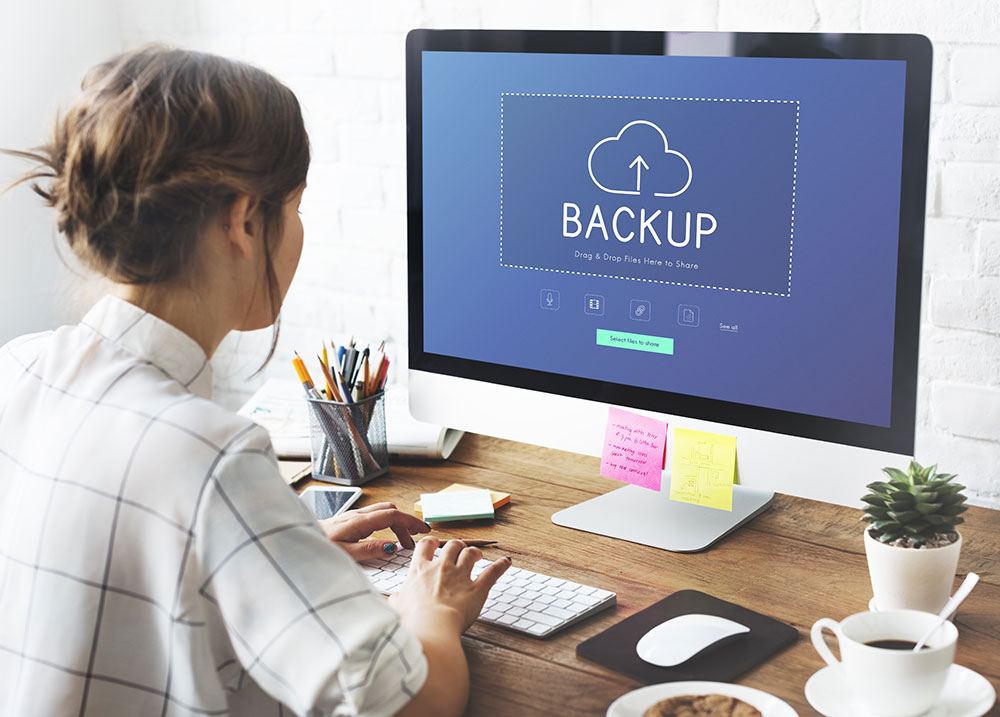How to avoid a data loss disaster

Dealing with a deluge of data is unavoidable when running a business.
For professional photographers, managing and protecting your client details, schedules, invoices and of course all those precious images is vital.
Lose it and you’ll end up in stormy waters. You’ll be faced not only with a loss of income and huge administration headaches, but potentially irreparable damage to your reputation.
Our advice? Be prepared. Anything could happen.
Hard drives fail, computers malfunction and, if you do dodge a meteor strike, you could easily fall victim to a break-in or fire.
Having a robust data backup system in place is crucial.
Without one, at best you could be rearranging a set of corporate headshots and swallowing the extra cost
At worst, you could be breaking devastating news to newly-wed clients when they return from honeymoon: your irreplaceable photos have vanished.
Here we explore and compare the different options for backing up your data. Keep it safe and secure and you’ll ensure smooth sailing for your photography business.
Lean On A Local Backup
Local backup consists of using storage such as a computer’s hard drive, a disc, flash drive or external hard drive.
It’s the most basic of backups and, because it doesn’t work over the internet, is handy for those with a slow connection.
But while it’s useful as a first line of defence, local backup suffers from major limitations.
Using a straightforward solution like this leaves your files vulnerable. If you store your external hard drive or USB stick in the same physical location as your PC, there’s still a single point of possible failure. Any damage or theft that takes place there could lead to complete data destruction.
Maybe you like the physical presence of an object containing all your data and the security that nobody else can possibly access it unless it’s stolen.
And if you subscribe to specialist photography management software such as Light Blue, a local backup perfectly complements how it backs up your data from the last time you synced.
However, the geo-redundancy theory goes that if data doesn’t exist in at least two different geographical places, it doesn’t exist at all.
And that’s why off-site backup is so important.
Opt For an Off-Site Backup
Geo-redundancy is critical to your backup strategy: if your primary backup fails, you have insurance at a second physical site.
But off-site means more than just keeping a spare hard drive in the glovebox of your car.
If bandwidth is an ongoing challenge, you could embrace the ‘Sneakernet’ phenomenon: simply transfer your data to an external hard drive and take it somewhere that you visit regularly, maybe a trusted friend or relative.
Leaving one or more encrypted copies of your data away from your own premises in this way will provide a basic off-site backup. One that may prove more reliable and speedier than depending on a slow network connection.
But the best solution for most is more sophisticated than this. Online backup sends your files over the internet to a secure data facility with remote servers: you upload them to be stored and download them to be restored. An extra layer of security to protect your data from any on-site disasters.
Backing up to the cloud allows you to ‘set it and forget it’: everything happens automatically so you always have a recent backup without having to add another task to your to-do list.
Do be careful not to confuse cloud backup with cloud storage. While backup software does what it says on the tin, cloud storage is based around syncing your files and folders.
So while the likes of Dropbox, Microsoft OneDrive and Google Drive do offer some level of backup – any file backed up to the cloud is naturally protected from computer failure – it’s not their primary purpose.
Instead, true online backups preserve all of your computer’s files, not just those that you select within a synced structure and want to access easily.
Platforms such as Backblaze, Crashplan and Carbonite are designed to recover and restore unlimited amounts of data.
So to be fully prepared for a potential disaster recovery mission, make sure you opt for one of these comprehensive cloud backup packages that go one step beyond simple storage.
For around £50 per year per user, you can rest assured that you won’t have to make any awkward client phone calls about lost photos.
You can also choose software specifically designed for your computer with dedicated options for Mac and Windows.
While Time Machine is native to your Mac, it relies on an external hard drive so the recommendation is to add a cloud backup service such as Carbon Copy Cloner. This allows you to schedule specific backups whenever it best suits your business needs.
On Windows, software such as Paragon and Acronis are especially suited to protecting your precious PC data.
When it comes to data, never underestimate your clients’ expectations.
Whether the images you’re taking are professional or personal, can easily be taken again or not, it’s important to demonstrate that you take the responsibility of looking after them seriously.
Highlight your professional approach to data storage and protection as part of your service offering: the peace of mind it can give both you and your clients is priceless.
Related
- How to Build Long-Term Relationships With Your Portrait Clients
- Which of your shoot locations brings in the most revenue? Here’s how to find out with Light Blue.
- A Smart Way to Compare This Year’s Sales with Last Year’s (Up to This Point)
- Print a Handy Summary of Your Shoot Record with Just One Click
- Present Contracts In-Person with Your iPad or Tablet
- Using Custom Fields to Forecast Portrait Session Sales
- Keep All Client Messages in One Place with a Custom Dashboard
- Two-way text messaging in Light Blue
- Never Miss a Booking with Automated Contract Reminders
- Five Positive Steps to Keep Your Business Healthy